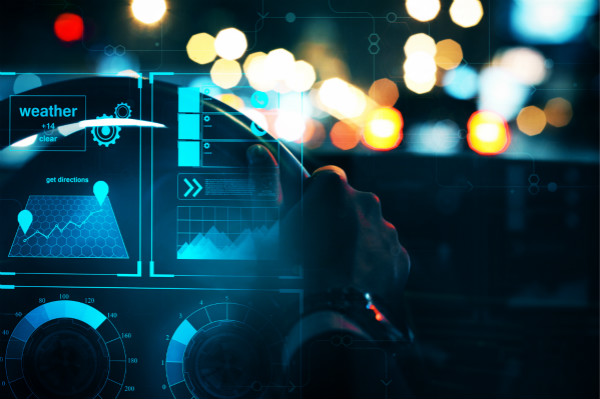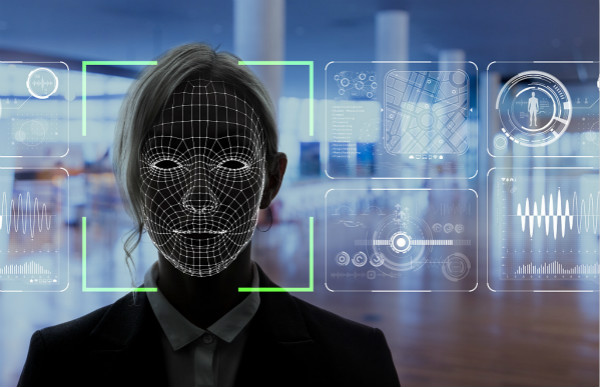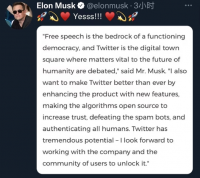In the article below, you can check out 12 examples of artificial intelligence that appear in our daily lives.
Artificial intelligence (AI) is growing in popularity, and it’s not hard to see why. AI has the potential to be applied in many different ways, from cooking to healthcare.
While artificial intelligence may be a buzzword today, tomorrow it may become a standard part of our daily lives. In fact, it’s already here.
1. Self-driving cars

They work and move on by using vast amounts of sensor data, learning how to handle traffic, and making real-time decisions.
Also known as self-driving cars, these cars use artificial intelligence technology and machine learning to move without the need for passengers to take control at all times.
2. Smart Assistant
Let’s start with what’s truly ubiquitous – intelligent digital assistants. Here, we’re talking about Siri, Google Assistant, Alexa, and Cortana.
We included them in our list because they basically listen and then respond to your commands, turning them into action.
So, you open Siri, give her a command, like “call a friend,” and she’ll analyze what you’re saying, filter out all the background noise surrounding your speech, interpret your command, and then actually execute it, all it takes is a few seconds.
The best part here is that these assistants are getting smarter, improving every stage of the command process we mentioned above. You don’t have to concretize commands like you did a few years ago.
Plus, virtual assistants are getting better at filtering unwanted background noise from your actual commands.
3. Microsoft Project InnerEye
One of the best-known AI initiatives is a project run by Microsoft. Not surprisingly, Microsoft is one of the top AI companies (though it’s certainly not the only one).
Microsoft Project InnerEye is state-of-the-art research that has the potential to change the world.
This project aims to study the brain, especially the nervous system of the brain, to better understand its function. The aim of this project is to eventually be able to use artificial intelligence to diagnose and treat various neurological disorders.
One of the best-known AI initiatives is a project run by Microsoft. Not surprisingly, Microsoft is one of the top AI companies (though it’s certainly not the only one).
Microsoft Project InnerEye is state-of-the-art research that has the potential to change the world.
This project aims to study the brain, especially the nervous system of the brain, to better understand its function. The aim of this project is to eventually be able to use artificial intelligence to diagnose and treat various neurological disorders.
4. Plagiarism
College students (or professors)? ) nightmare. Whether you’re a content manager or a teacher grading papers, you have the same problem – the internet has made plagiarism easier.
There’s an almost limitless amount of information and data out there, and it’s easy for less cautious students and staff to take advantage of.
In fact, no one can compare and contrast someone’s article with all the data. Artificial intelligence is a completely different kind of thing.
They can sift through a surprising amount of information and compare it to relevant text to see if there are any matches.
Also, thanks to advances and developments in this area, some tools can actually examine foreign-language sources, as well as images and audio.
5. Recommended
You may have noticed that media recommendations are getting better on some platforms, Netflix, YouTube, and Spotify are just three examples. This is thanks to artificial intelligence and machine learning.
All three platforms we’ve mentioned take into account what you’ve already seen and liked. This is the easy part. They then compare and contrast it with thousands of media outlets. They mostly learn from the data you provide and then use their own database to give you what’s best for your needs.
Let’s simplify this process for YouTube, just as an example.
The platform uses data such as hashtags, demographic data such as age or gender, and the same data consumers use for other media. Then, it mixes and matches to give you suggestions.
6. Banking
Today, many of the larger banks give you the option to deposit checks from your smartphone. You don’t have to actually walk to the bank, it’s just a few taps away.
In addition to the obvious security measure of accessing bank accounts from your phone, checks also require your signature.
Banks now use AIs and machine learning software to read your handwriting, compare it with your previous signature to the bank, and use it securely to approve a check.
Collectively, machine learning and artificial intelligence technologies speed up most operations done by banking software. This all helps to perform tasks more efficiently, reducing wait times and costs.
7. Credit and Fraud
Now that we’ve talked about banking, let’s talk a little bit about fraud. Banks process a large number of transactions every day. Tracking all of this, analyzing it, would be impossible for an average person.
In addition, the pattern of fraudulent transactions changes every day. With artificial intelligence and machine learning algorithms, you can analyze thousands of transactions in a second. Plus, you can get them to learn, figure out what a problem transaction might look like, and prepare for future problems.
Next, whenever you apply for a loan or apply for a credit card, the bank needs to check your application.
Taking into account multiple factors, such as your credit score, your financial history, all of which can now be handled by software. This shortens approval wait times and reduces error rates.
8. Chatbots
Many businesses are using artificial intelligence, especially chatbots, as a way for their customers to interact with them.
Chatbots are often used as a customer service option for companies that don’t have enough staff to answer questions or respond to inquiries at any given time.
By using chatbots, these companies can get important information from customers while freeing up employees’ time for other things.
During times of heavy traffic, like Black Friday or Cyber Monday, these are a godsend. They can save your company from being overwhelmed with problems and allow you to better serve your customers.
9. Keeps you out of spam
Now, we should all be thankful for spam filters.
A typical spam filter has many rules and algorithms to minimize the amount of spam. Not only will this keep you safe from annoying ads and Nigerian princes, but it will also help you defend against credit card fraud, identity theft, and malware.
Now, what makes a good spam filter effective is the artificial intelligence that runs it. The AI behind the filter uses email metadata; it pays attention to specific words or phrases, it pays attention to some signals, all to filter out spam.
10. Video Summary
This everyday AI has become very popular at Netflix.
That said, you may have noticed that many of the thumbnails on websites and some streaming apps have been replaced by short videos. A major reason this has become so popular is artificial intelligence and machine learning.
Instead of having editors spend hundreds of hours shortening, filtering, and cutting long videos into three-second videos, the AI will do it for you. It analyzes hundreds of hours of content and then successfully summarizes it into a small piece of media.
11. Recipes and Cooking
AI also has potential in more unexpected areas, such as cooking.
A company called Rasa has developed an artificial intelligence system that analyzes food and then recommends recipes based on what’s in your refrigerator and pantry. This type of AI is a great way for people who love to cook but don’t want to spend too much time planning meals in advance.
12. Face Recognition

If we can say one thing about artificial intelligence and machine learning, it is that they make every technology they come into contact with more effective and powerful. Facial recognition is no exception.
There are many applications now using artificial intelligence for their facial recognition needs. For example, Snapchat uses AI technology to apply face filters by actually recognizing visual information presented as a human face.
Facebook can now recognize faces in specific photos and invite people to tag themselves or their friends.
And, of course, consider unlocking your phone with your face. Well, it needs artificial intelligence and machine learning to work.
Let’s take Apple Face ID as an example. When you set it up, it scans your face and puts about 30,000 DoS on it. It uses these dots as markers to help it recognize your face from many different angles.
This allows you to unlock your phone with your face in many different situations and lighting environments, while preventing others from doing the same.
in conclusion
The future is now. AI technology will only continue to evolve, grow, and become increasingly important to every industry and nearly every aspect of our daily lives. If the above example is to be believed, it is only a matter of time.
In the future, artificial intelligence will continue to develop and appear in new areas of our lives. As more innovative applications come out, we will see more ways that AI can make our lives easier and more efficient!



GIPHY App Key not set. Please check settings